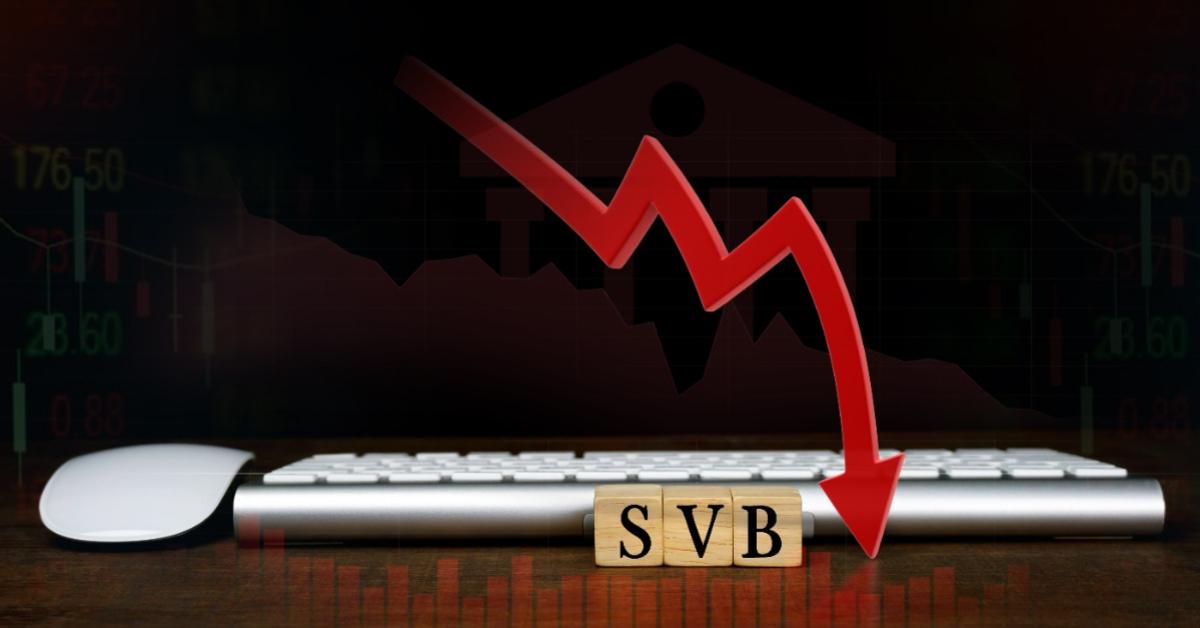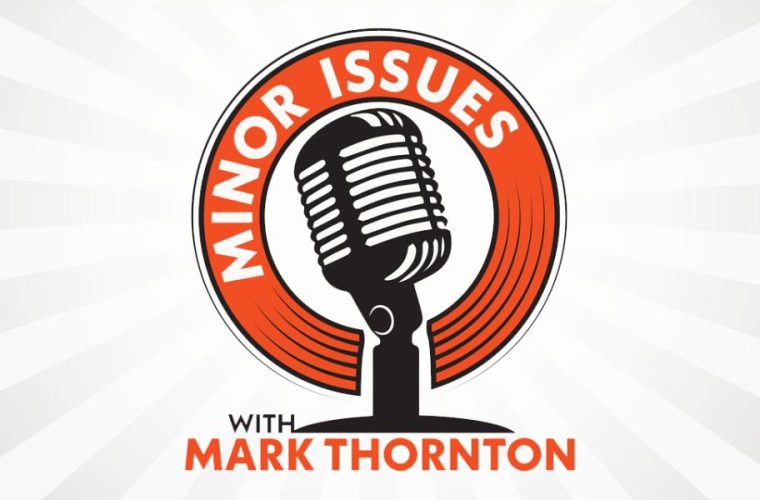
Would Stress Tests Have Prevented the Failure of SVB? Probably Not
“This is all about regulation and the fact that at some point in time there was great advocacy for making sure that the regional banks and the smaller banks didn’t have to comply with some of the rules that perhaps would not have allowed them to get into this situation because there would’ve been stress testing and more oversight and more watching of what was going on.”
~ Rep. Maxine Waters (D), Financial Services Committee, March 15, 2023
As fate would have it, Silicon Valley Bank CEO Greg Becker lobbied in 2018 to raise the asset bar on the annual Dodd-Frank stress tests from $50 billion to $250 billion. On May 24, 2018, when President Donald Trump signed “the biggest rollback of bank rules since the financial crisis,” SVB’s assets footed to $54 billion. By the end of last year, they had mushroomed to $212 billion.
Never mind that the rollback bill was signed by 33 Democrats in the House and 17 in the Senate. The Left had its perfect scapegoat. “Back-to-back collapses came after deregulatory push,” claimed The New York Times, shortly after the FDIC took control of SVB and Signature Bank, the second and third largest U.S. bank failures in history.
Would it have made any difference? The architects of the 2010 Dodd-Frank Act put in place a set of rules to prevent another mortgage crisis, never imagining that the next crisis would change its spots. Truth be told, subjecting SVB to a rash of annual stress tests would not have saved the day. Bank regulators have been looking for trouble in all the wrong places.
Banking risks
The nature of modern day, fractional reserve banking is a high wire act, juggling blow torches over pools of gasoline. Far from their staid, conservative public image, banks are exposed to a number of risks that could spell impending doom on any given day. These risks are magnified by leverage, typically 10 to 15 times.
A bank has three main risks: credit risk (not being paid back), interest rate risk (rising interest rates) and funding risk (depositors pulling their money out). Banks are in the business of borrowing short-term and lending long-term, a.k.a. the “carry trade.” While the stream of interest payments from borrowers is fixed, the rate banks pay depositors is variable and unknown.
The 2008 financial meltdown centered on credit risk, as a combination of easy money (meant to contain the bursting tech bubble of 2000-02) and the government’s drive towards homeownership encouraged lax lending standards and ignited a housing bubble. In 2009, the same all-seeing regulators who failed to anticipate the Great Financial Crisis (GFC) were tasked with heading off the next disaster, leading to the Basel III Accords in which 27 member countries participated. This was the blueprint for Dodd-Frank, which began subjecting the “global systemically important banks” (G-SIBs) to annual stress tests in 2013.
Administered by the Federal Reserve, the tests project various economic variables over a 3 ¼ year period for a baseline path and “severely adverse” scenario (deep recession with the unemployment rate reaching roughly 10 percent). A simulation is then run along the severely adverse path, concentrating on how capital ratios are impacted for each participating bank.
Post-GFC environment
The good news is that the credit risk of bank portfolios appears to be waning. From 2013 to 2022, the Fed’s loss rate assumption on domestic first-lien mortgages went from 6.6 percent to 1.3 percent as homeowners’ equity increased from 52.6 percent to 71.2 percent. Apparently, some of the lessons from the mid-2000s housing bubble were taken to heart.
The bad news is that nobody paid attention to exponentially growing interest rate risk. The onset of Covid-19 and ensuing government lockdowns set off an ill-fated “flight to safety,” plunging 10-year Treasury yields from 1.92 percent to 0.65 percent in the first quarter of 2020. Several stimulus packages followed, totaling over $6 trillion. As the government’s budget deficit swelled from $1.0 trillion to $4.1 trillion that year, the Fed went into rescue mode, more than doubling its balance sheet. From the end of 2019 to the end of 2021, bank deposits exploded, going from $13.2 trillion to $18.0 trillion.
The banks sealed their fate when they put that money to work, much of it flowing into low-yielding Treasury bonds and mortgage-backed securities (government guaranteed) which the regulators had assigned ultra-low capital requirements and risk weightings of zero. By the end of 2021, CPI inflation hit 7.0 percent, the highest rate in 40 years, yet the fed funds rate (overnight rate banks lend to each other) remained stuck at 0.08 percent. With deposit rates essentially at zero, buying government bonds yielding 1 ½ percent seemed like a no-brainer. What could possibly go wrong?
Plenty, as interest rates more than doubled, narrowing the gap with price inflation and producing the worst year for bonds since the early days of the republic. (And no, this wasn’t caused by Fed chair Jay Powell raising rates. The market demanded higher rates to compensate for raging price inflation. The Fed was way behind the curve.) For all of 2022, the 10-year Treasury lost 17.5 percent of its value, with the yield ending the year at 3.88 percent. For perspective, a 10x leveraged bank that loses 10 percent on its assets is insolvent.
2022 stress test
How far off were the stress test modelers? Heading into 2022, the baseline scenario assumed declining, but still positive real GDP growth, CPI inflation falling to 2.1 percent over the next three years and the 10-year Treasury yield increasing to 2.5 percent. Meanwhile, the severely adverse scenario projected a 1.3 percent CPI inflation rate and 0.7 percent 10-year yield by the 3rd quarter of 2022. Ironically, the baseline path may have been more damaging to bank balance sheets due to rising rates, but only the adverse path was considered when running the 2022 stress tests.
The 33 banks tested in the first half of 2022 had a combined Q4 2021 Tier 1 capital ratio of 14.1 percent, well above the regulatory minimum of 6.0 percent. By comparison, Silicon Valley Bank sported a Tier 1 capital ratio of 14.9 percent, earning the bank the distinction of “well-capitalized.”
Under the severely adverse scenario, the Tier 1 capital ratio of the 33 banks was projected to fall as low as 11.4 percent, still comfortably above the minimum. Although we cannot know for sure, SVB’s outsized holdings of bonds (59 percent of assets vs. just 31 percent in loans) and high capital ratio meant it would have likely passed the 2022 stress test with flying colors.
Held-to-maturity accounting
How big were the bond losses at Silicon Valley bank? They totaled $18 billion at year-end (17 percent of cost), $15 billion of which was kept off the books as long as the securities were marked “held-to-maturity.” While HTM losses wiped out 98 percent of SVB’s tangible equity, they are spread throughout the banking system, albeit to a lesser degree. For example, Bank of America would see 53 percent of its equity vanish under mark-to-market accounting. (Losses were also 17 percent of cost at year-end, but BofA’s bond portfolio was only 26 percent of total assets.)
The Fed’s new Bank Term Funding Program (BTFP) kicks the HTM can further down the road. The banks will not have to recognize these losses as long as they never sell, holding to maturity. To help them over the current rough patch, the Fed is willing to lend against these underwater bonds at par (well above their market value) for one year at the overnight index swap rate (currently 4.72 percent) plus 0.10 percent. In other words, these losses will be passing through the income statement for years, slowly bleeding bank equity. The total bill will depend on future short-term interest costs.
Conclusion
Citigroup CEO Jane Fraser recently argued, “this is not a credit crisis.” She’s right. This is a crisis caused by banks taking on massive amounts of interest rate risk from 2020-21 during the final blow off phase of a 40-year bull market in bonds, all under the watchful eyes of the financial system’s overseers.
This is not to suggest that the problem is isolated to bond portfolios. The banks’ loan books make provisions for future credit losses, not mark-to-market losses due to rising rates. According to Goldman Sachs, 99 percent of outstanding mortgages were originated at rates below today’s market rate.
The Fed is caught between a rock and a hard place. Allow interest rates to rise much further and the banking system becomes insolvent. Try to push rates lower and price inflation spirals out of control. Above all, the Fed must instill confidence in the system lest depositors panic. Like the banks, the Fed is juggling blow torches.
Several years ago, Jim Grant envisioned what should be obvious today: “The question before the house is whether the central bankers can continue to control events or whether events will turn the tables and start to control the central bankers. Our money’s on events.”



